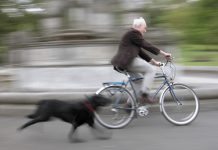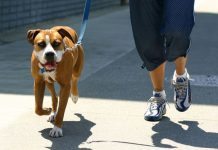
Dogs are very good at reading human body language. We discover how to communicate with dogs properly; you will see that making yourself understood by the dog is not an impossible task if we express ourselves in the right way!
How to make yourself understood by your dog
Communicating with your dog properly is crucial, both for training, as well as general canine education. While we believe our dog is relaxing or even dozing off, he is actually spying on us and watching us carefully, especially studying our posture, our gestures with our hands, our body movements, facial expressions, tactile communication, our scents, the words we say and all forms of non-verbal communication.
Gestures, for our four-legged friend, are like words to us and should be used properly to make your dog understand you. We must therefore avoid attributing too many meanings to a single gesture and vice versa. An act must represent one action or word and our movements should not be too similar, or the dog may get confused.
How to communicate with dogs
It should be emphasized that the dog also notices the speed, the trajectory and the fluidity of our body movements. Because of this, we should not make sudden movements, but be constant and gradual. Kinetics is very important, because a moving object can produce in a dog various emotions such as fear, playfulness, etc., As for the facial expressions, our four-legged friend is an exceptional judge, there are dogs that have learned to smile even as a welcome gesture, to frown, and even raise their eyebrows.
Haptic communication (ie through physical contact) is perhaps the most means to communicate with dogs! Contact can be accomplished by simply holding his hand on the dog’s body or by petting them: the first way indicates alliance and may be useful to strengthen a particular behavioral expression of the dog; in the second case it can be taken to mean parental connotation, but beware, if done incorrectly could promote the centrality of the relationship between the dog and the person, causing jealousy of others (classic example of second-dog jealousy!)
Also do not forget that the dog recognizes our smells and the latter may give rise to very specific physiological responses. You will see that if we can express ourselves in an appropriate manner, our friendship with our dogs a lot will improve by establishing a relationship of complicity.



















